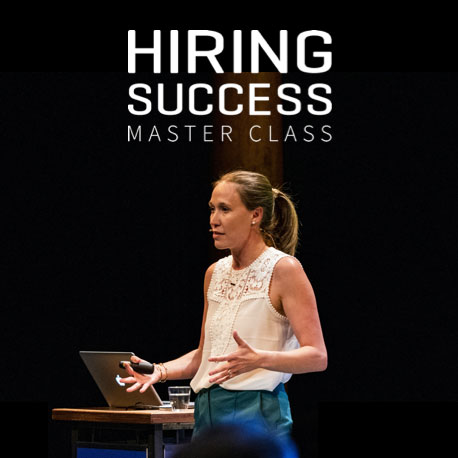As outlined in a previous post, there are three core pillars to every great talent acquisition strategy. The first pillar, Talent Attraction & Engagement, emphasizes an organization’s ability to engage quality talent through various tactics like deep sourcing, advertising, and internal programs.
However, before deciding which tactics to apply, it’s important to have a clear understanding of the roles for which you’re hiring. This approach will allow you to craft, with more precision, a talent acquisition (TA) strategy to source and hire the candidates your company needs.
How does one go about doing so? The Talent Scarcity-Impact Framework.
Table of Contents
- Talent Scarcity-Impact Framework
- Unicorns: high scarcity – high impact
- Professionals: low scarcity – high impact
- Core: low scarcity – low impact
- Specialists: high scarcity – low impact
- Putting the framework into practice: building a hiring plan
Talent Scarcity-Impact Framework
Just like marketing segments customers, recruiters should segment hires—as in, identify who you are trying to hire. It’s useful to map the talent you’ll need to specific objectives for your company.
We recommend segmenting your hiring goals according to criteria like skills, experience, and education so that you can custom tailor hiring strategies for each segment. This allows you to work backward and determine what specific capabilities within Talent Attraction & Engagement you will need to prioritize.
This approach to hiring doesn’t come without its challenges, and we recommend using the Talent Scarcity-Impact Framework. This model segments candidates using two factors:
- How vital and impactful is this person’s role?
- How scarce is this person’s specific skill set?
You can also map your hiring targets to this framework by taking the following steps:
- List all the target roles you need to hire.
- Determine how impactful each role will be for the business. Think about key success factors for your organization such as product roadmap milestones, sales goals, etc.
- Determine how scarce the skills are for each required role. For example, software engineers with experience in machine learning algorithms are quite scarce, while entry-level retail candidates may be more readily available.
- Finally, plot each role in one of the four quadrants from the Talent Scarcity-Impact Framework illustrated below.

Each of these categories should be handled uniquely with concern to messaging, promotional channels, and budget.
Unicorns: high scarcity – high impact
These hires typically possess a rare mix of high impact skills, are hard to find, and offer immense business value. In the healthcare sector, an example would be neurosurgeons. In the financial sector, star traders and analysts. This category also includes senior level management and leadership.


Unicorns are typically looking for roles in high growth organizations where they can make an impact by contributing their expertise and, in turn, strengthen their personal brand. To attract these candidates, TA teams need to focus on strong employer branding and using specific, personalized messaging or content that resonates with the potential hire’s personal and professional ambitions.
Again, since unicorns are scarce, valuable, and highly sought after, in order to successfully recruit them you’ll need to allocate considerable resources—specifically for direct sourcing. Typically, hiring candidates from this segment increases the overall hiring budget. For example, executive search firms typically charge 20-30% of a new hire’s first-year salary as commission. The entire Hiring Budget (total recruiting costs / new hire payroll) for most organizations normally falls in the range of 5-20%.
Professionals: low scarcity – high impact
These hires are relatively easy to find and drive high organizational impact. For example, mid-level managers, marketers, sales representatives, and consultants. They do provide considerable organizational value and, consequently, have modest leverage when choosing an employer.


Hiring strategies for these candidates require less targeted precision and can be executed more cost-effectively. For a company with an overall Hiring Budget of 5%, this segment may have a Hiring Budget of 3-5%.
Core: low scarcity – low impact
These hires are relatively easy to find and have limited individual impact. Employees that assist with back office, administrative functions, and support functions are examples. TA teams can attract most of these candidates through mass marketing. However, it’s still important to be discerning and invest wisely when selecting new hires in this segment, as they’re often well-suited for internal mobility.


Similar to professionals, attracting and hiring Core staff can be accomplished through cost-effective, mass targeting. For a company with an overall Hiring Budget of 5% , this specific segment may have a hiring budget of 2–5%.
Specialists: high scarcity – low impact
These candidates have less individual impact, but are still difficult to source. Nurses, lab technicians, financial advisors, and software engineers are all examples. These candidates usually gravitate toward opportunities in companies that will develop their careers.


Since these workers are also difficult to source, they’re in a position to be selective when choosing a new employer. To attract these candidates, TA teams should rely on developing a robust brand identity.
Hiring these candidates also requires significant investment. For a company with an overall Hiring Budget of 5% , this segment may necessitate a Hiring Budget of 5-7%.
Putting the framework into practice: building a hiring plan
Now that you have a better understanding of candidate segments, and how they relate to your marketing efforts and budget, we can build a hiring strategy. We’ll use a hypothetical company, Green Earth Group, as an illustrative example.
Green Earth Group is a global enterprise specializing in renewable consumer packaging goods With close to 3,000 employees in five countries across the world, the organization is scaling rapidly. In order to keep pace, it will need to come up with a hiring plan that’s capable of sustaining (pun intended) its long-term goals.
After reviewing their growth targets and factoring in churn, the company predicts that it will need to hire 1,000 new employees across all segments:
To meet their hiring needs, they are prepared to invest 5% of New Hire Payroll into recruiting—in other words, their Hiring Budget for the year will be 5%. The 1,000 people they need to hire will have an average salary of $100,000, which means they will have $5,000,000 to invest in total (5% * 100,000 * 1,000).
Based on the guidelines mentioned above, they’ll allocate the following investments into each segment and prioritize the following channels:



What’s the reasoning behind selecting particular sourcing channels like programmatic job advertising for the Professionals group, or direct sourcing for Unicorns? That’s discussed in more detail in the following article, as well as in The Definitive Guide to Hiring Success.
Conclusion
In the same way that marketers segment their customers to reach them with more precision, it’s important that recruiters use a similar approach to reaching potential hires. By using the Talent Scarcity-Impact Framework, TA teams can group candidates into specific categories that will allow them to develop a sourcing strategy that efficiently allocates resources and solidifies positive recruiting outcomes.


